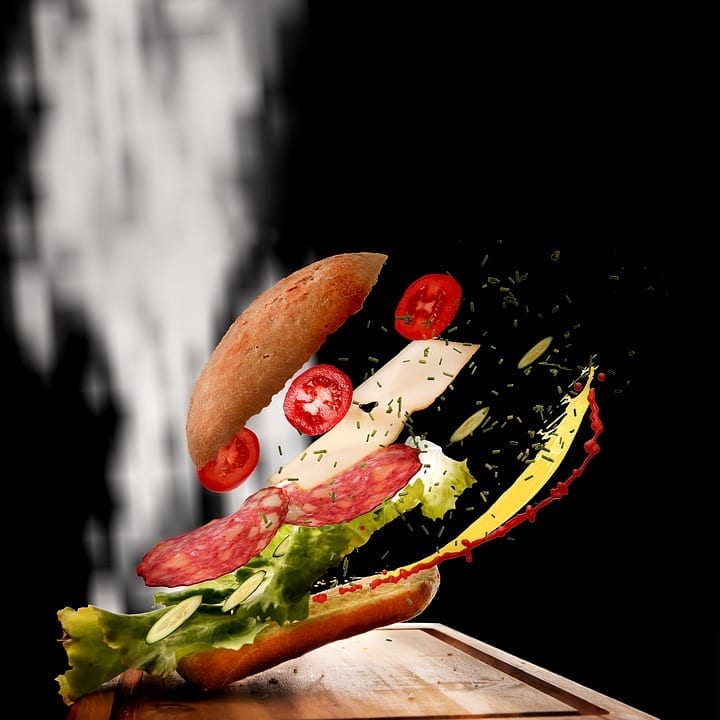1. What are the six major types of grains from which the world’s cereals are derived?
- Rice, corn, wheat, barley, oats, rye
2. Which type of grain is #1 in terms of world consumption?
- Rice
3. In general, grains or starches form the primary staple foods for all cultures in the world. Why?
- They are relatively easy and inexpensive to produce compared to animal products and are an important source of kcalories compared to fruits and vegetables. Therefore cereal grains have historically functioned as the primary agricultural products and the basis of food culture for civilizations around the world.
4. Name the three components of a cereal grain. Circle the portion in which most of the vitamins/minerals are found.
- germ
- bran
- endosperm
Both the germ and the bran are good sources of vitamins and minerals, but the germ is the richest. However, since the germ is high in unsaturated fats and goes rancid easily, it is usually removed during processing.
5. What is the difference between a whole grain and a processed grain/cereal?
- A whole grain includes the germ, bran, and endosperm. A processed grain/cereal has had components removed, usually leaving only the endosperm. A whole grain is therefore higher in fiber and in any nutrients that have not subsequently been added in enrichment/fortification.
6. What is a roux?
- A thickener made by blending a fat and a starch (e.g. margarine and flour)
7. What is a white sauce?
- A roux to which a liquid (e.g. milk) is added
8. What is the standard procedure to make a white sauce?
- Blend the starch into the fat over heat, then gradually add the liquid, stirring constantly to avoid lumps. In some white sauces, the separator is a liquid rather than a fat. The principle is the same, though–keep the starch molecules from clumping together, then add further liquid.
9. What is gelatinization?
- The thickening that occurs when a starch, heated in a liquid, absorbs water and swells
10. Why should one avoid harsh stirring when preparing a white sauce?
- Harsh stirring could break down starch granules, reducing their ability to swell and thicken properly.
11. What is gelatin?
- When a gelatinized mixture cools, starch molecules form bonds between them, trapping water and thereby forming a gel. This is gelatin.
12. Give an example of a product made in class for which gelation was necessary.
- The chocolate pudding–that’s why it was refrigerated (though a gel could form without refrigeration)
13. Give an example below for each type of white sauce listed.
- Thin: cream soups, cream sauces as for vegetables
- Medium: sauces such as Alfredo or for meats; macaroni and cheese; cream gravies
- Thick: croquettes; base for souffles
14. What happens if you add a starch such as cornstarch to cold water?
- The starch will dissolve (you should shake or stir the starch).
15. What happens if you let a cornstarch/water mixture sit for 10 minutes?
- The solution will separate
16. What happens if you add a starch such as cornstarch to hot water?
- You will get lots of lumps
17. How would you make gravy? What ingredient serves as the separator? the starch? the liquid? What should you do to avoid lumps?
- Add a starch such as cornstarch or flour to cold water and shake to make a dispersion. Then add the solution gradually to the meat drippings to thicken the gravy without lumps. Keep stirring until smooth and properly thick. Note: A gravy is also likely to need added water and flavorings.
- Separator: water; fat in the meat drippings also acts as a separator
Starch: flour or cornstarch
Liquid: added water
18. What is an Alfredo sauce?
- A white sauce made with melted Parmesan cheese
19. Name the grain from which each of the following cereal products is derived.
? hominy grits: corn
? farina: wheat
? couscous: wheat
? macaroni: wheat
? amaranth: amaranth
? tabouli: cracked wheat (bulghur/bulgur)
20. In general, what is the function of flour in a recipe?
- Flour, which can be derived from any grain, serves to provide structure and/or thickening to a recipe.



Be the first to comment on "20 Questions on Grains,Cereal and Starch"